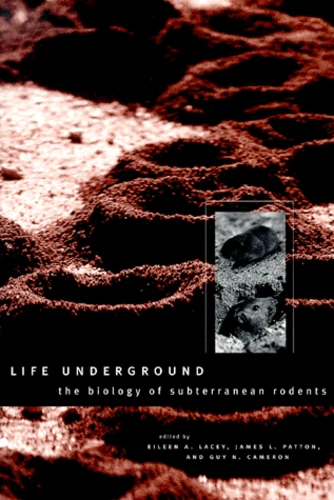Life Underground. The Biology Of Subterranean Rodents
Par : , , ,Formats :
- Paiement en ligne :
- Livraison à domicile ou en point Mondial Relay indisponible
- Retrait Click and Collect en magasin gratuit
- Réservation en ligne avec paiement en magasin :
- Indisponible pour réserver et payer en magasin
- Nombre de pages449
- PrésentationBroché
- Poids0.62 kg
- Dimensions15,5 cm × 22,5 cm × 2,6 cm
- ISBN0-226-46728-7
- EAN9780226467283
- Date de parution05/09/2000
- ÉditeurUniversity of Chicago Press
Résumé
Many mammals like to dig in the dirt, but few call it home. Those that do, such as mole-rats, zokors, and tuco-tucos, have developed novel adaptations to their subterranean life, including bones and muscles modified for efficient digging and ways to navigate underground without using their eyes. These and other unusual traits, adopted independently by unrelated groups around the world, make subterranean rodents fascinating subjects for biologists.
Life Underground provides the first comprehensive review of the biology of subterranean rodents. Arranged by topic rather than by taxon to facilitate cross-species comparisons, chapters cover such subjects as morphology, physiology, social behavior, genetic variation, and evolutionary diversification. Two main questions run throughout the book. First, to what extent has subterranean life shaped the biology of these animals, leading to similar adaptations among otherwise dissimilar species ? Second, how have the distinct evolutionary histories of these groups led to different solutions to the challenges posed by life underground ?
Life Underground provides the first comprehensive review of the biology of subterranean rodents. Arranged by topic rather than by taxon to facilitate cross-species comparisons, chapters cover such subjects as morphology, physiology, social behavior, genetic variation, and evolutionary diversification. Two main questions run throughout the book. First, to what extent has subterranean life shaped the biology of these animals, leading to similar adaptations among otherwise dissimilar species ? Second, how have the distinct evolutionary histories of these groups led to different solutions to the challenges posed by life underground ?
Many mammals like to dig in the dirt, but few call it home. Those that do, such as mole-rats, zokors, and tuco-tucos, have developed novel adaptations to their subterranean life, including bones and muscles modified for efficient digging and ways to navigate underground without using their eyes. These and other unusual traits, adopted independently by unrelated groups around the world, make subterranean rodents fascinating subjects for biologists.
Life Underground provides the first comprehensive review of the biology of subterranean rodents. Arranged by topic rather than by taxon to facilitate cross-species comparisons, chapters cover such subjects as morphology, physiology, social behavior, genetic variation, and evolutionary diversification. Two main questions run throughout the book. First, to what extent has subterranean life shaped the biology of these animals, leading to similar adaptations among otherwise dissimilar species ? Second, how have the distinct evolutionary histories of these groups led to different solutions to the challenges posed by life underground ?
Life Underground provides the first comprehensive review of the biology of subterranean rodents. Arranged by topic rather than by taxon to facilitate cross-species comparisons, chapters cover such subjects as morphology, physiology, social behavior, genetic variation, and evolutionary diversification. Two main questions run throughout the book. First, to what extent has subterranean life shaped the biology of these animals, leading to similar adaptations among otherwise dissimilar species ? Second, how have the distinct evolutionary histories of these groups led to different solutions to the challenges posed by life underground ?

